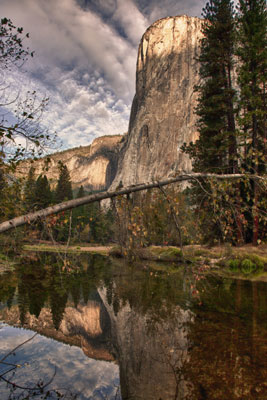Sunrise is a glorious time for nature and landscape photography. You capture wonderful images just before the sun comes up and as it peeks over the horizon, and also for an hour or so after the sun rises.
If you do your job as a photographer the right way, you don’t take a picture — you create a photograph. When you create anything, you assemble given elements, add your creative spin, and finish your masterpiece. A sunrise photograph is no exception. Here are six things you can do to get better photographs:
Know the exact time the sun rises and the exact time it will illuminate the landscape. You can find out by conducting an Internet search, or local broadcast news reports. The time the sun rises and the time it will start illuminating the landscape depend on the altitude of the place you’re photographing and the surrounding terrain.
If you’re in a forest, the sun will take a while to poke over the tops of the trees. Before that occurs, you’ll see patches of light poking through the trees, casting brilliant rays of light on the landscape.
If you’re in a valley surrounded by mountains, the sun will have to crest the mountain before you can start taking photos. If clouds are hovering above the mountains, you can start taking pictures as soon as the clouds are illuminated. If you’re not blessed with clouds, then wait patiently until the valley is flooded with glorious golden sunlight.
Shoot the sunrise rising over a beautiful landscape. This requires a bit of thought. You need to know the direction from which the sun rises and how it illuminates the landscape. The only way to know this is to visit a place a day or two before you plan to shoot the sunrise.
If you’re going on a photo vacation, look at the work of other photographers for the area. Many photographers and photo-sharing sites post the metadata for images, telling you exactly when the photograph was taken. All you need to do is be in the same place at the same time of year to capture a sunrise photograph — with, of course, your own spin on it.

Location is everything. You can get to the most beautiful location in the world and still not get a great photograph. The difference of a hundred yards or a quarter of a mile can make all the difference between a great picture and an average picture.
This is where your knowledge of the area or your research of that area comes into play. When you get to a great location, move around until you find the ideal vantage point. Take the “cliché” pictures first and then dig deeper to create unique photographs.
A layer of clouds will enhance your image. The sun will illuminate the underside of the clouds before it rises above the horizon. Arrive at least half an hour before sunrise.
Water features will enhance your picture. If you’re photographing a location where the sun rises over a lake or the ocean, the sun will cast a wonderful reflection on the water. When you photograph a scene with the sun reflecting on the water, you may have to use exposure compensation to reduce the exposure if the reflections are too bright.
Compose your image properly. If the sun is in your picture, compose the picture so that the sun is on the left or right side of the image about one-third of the way from the edge. The placement of the horizon line depends on the scenery.
If you have a ho-hum landscape but a wonderful layer of clouds, place the horizon line in the lower third of the image. If you’re photographing the sun rising over a body of water, place the horizon line in the upper third of the image to draw the viewer’s attention to the water. When you compose an image properly, your viewers know where to look and what the focal point of your image is.

